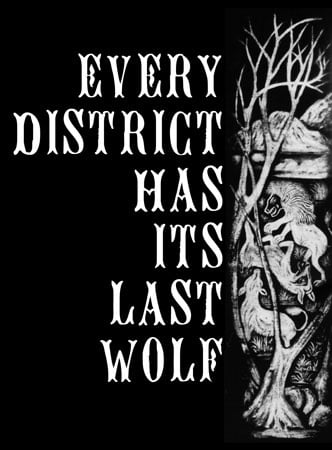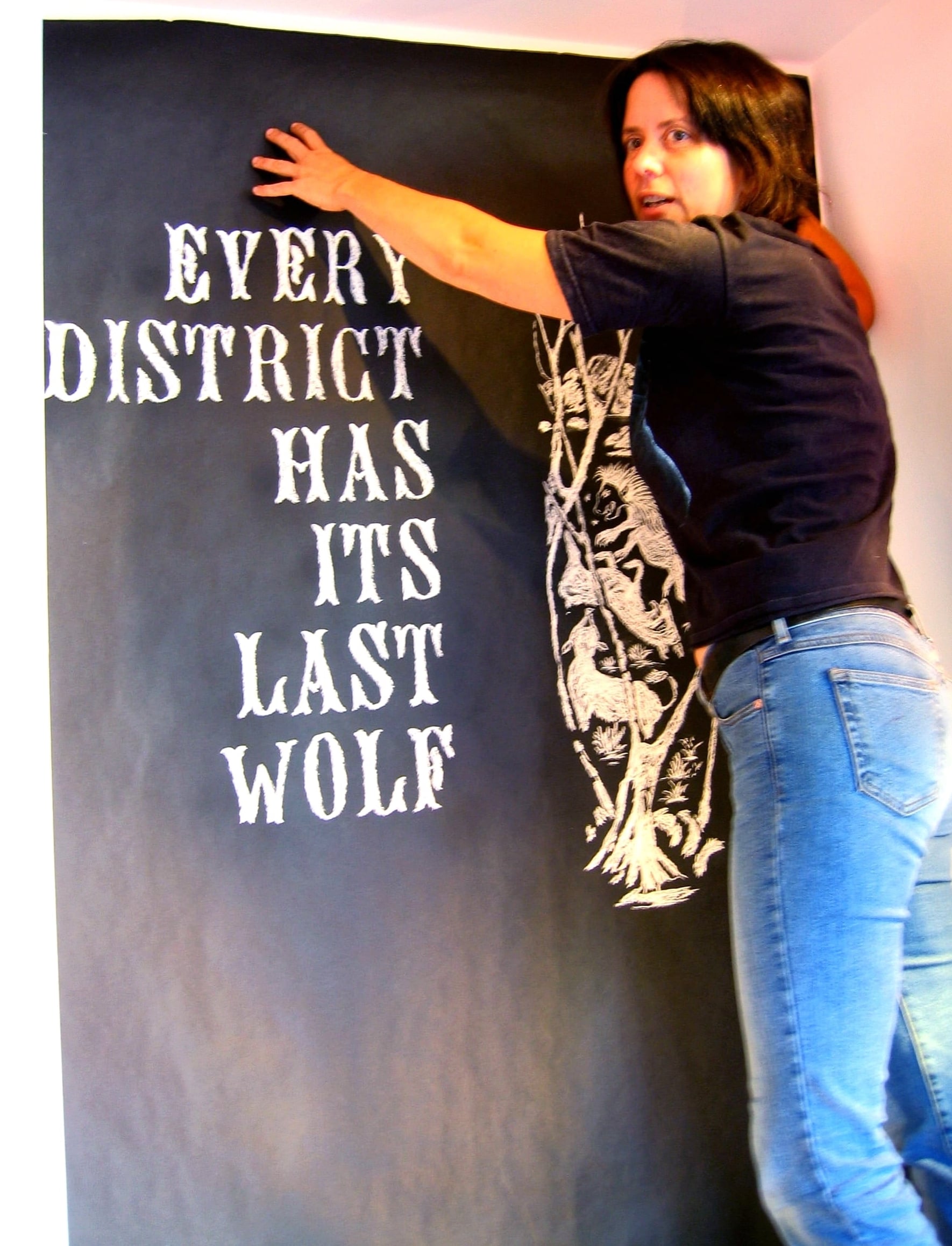Lovejoy Lost
2004, paper, chalk and video installation, silent
cinematography: Vanessa Renwick, Gus Van Sant
synopsis:
Every district has its last wolf.
Whatever happened to the Lovejoy Columns? For years, concrete columns held up the Lovejoy ramp, a viaduct heading west off the Broadway Bridge that dropped you into the now-gone flatlands of the SP&S railway yards in the Northwest industrial district. Greek immigrant and train night watchman Tom Stefopoulos covered the Lovejoy columns with his fanciful artwork in the 1940s. Over the years, the murals have made starring appearances in the films “Foxfire” with Angelina Jolie and Gus Van Sant’s “Drugstore Cowboy,” plus “Lucky Three”, Jem Cohen’s short film featuring Elliot Smith.
It had always been an adventure to walk those urban plains. Under the Lovejoy ramp, with the ba-thump of cars traveling overhead was being like being in a cathedral of the wilds. Wandering the district was always a delight, there was invariably discovery; the former train roundabout or 6 pairs of embroidered Chinese shoes lined up at the base of a column.
Tom’s paintings of mythical animals and the Greek philosopher Diogenes the Cynic reached deep inside and touched the soul. It was the emptiest–“the largest part of portland that was so close in to the core of the city” but that emptiness was filling and fulfilling.
When the city demolished the ramp “to be rebuilt just a few inches over to make room for the new trolley track” it was like the bursting of a dam. The development of what is now known as the Pearl District crashed in, engulfing the once wild and open terrain in the center of the city.
Many good people went to great lengths to save the Lovejoy columns, with disappointing results. The now-defunct art and architecture team of Rigga, spearheaded by James Harrison, was the foremost voice of dissent when the demolition of the ramp was imminent. Art conservator Claire Dean worked to keep the 60-year-old murals intact. There were meetings with the Portland Department of Transportation, City Commissioner Hales, and Mayor Katz, and Commissioner Erik Sten’s assistant Marshall Runkel, where politicians and advocates wrestled the topic of how to preserve the hallowed columns. Concurrent with those meetings were rituals performed by Rigga, the first of which was a eulogy in 1998 when it seemed the columns were doomed. Later came a Suspension Ceremony in 1999 as the columns were cut down and moved, followed by a Sleep Ceremony to bless the resting place in transition until their hoped-for resurrection. Ritual, political pressure and community activism failed in their efforts to reinstall the columns to a new location in the Pearl District.
Tom Stefopoulus’ urban canvases slept patiently in a lonely storage lot for over four years, until developer John Carroll happened upon Lovejoy lost installed in the PDX Window Project. He became aware of the fruitless work to save the columns and after learning about the whole sad story through this video installation, he stepped in to help. Now two of the columns stand in the courtyard of the Elizabeth Building, 333 NW 9th Avenue in the Pearl District, and a small beam of Diogenes’ lantern still shines out over the city.
premiere:
Aug 10 - Sept 4, 2004 PDX Window Project/PDX Contemporary Art


